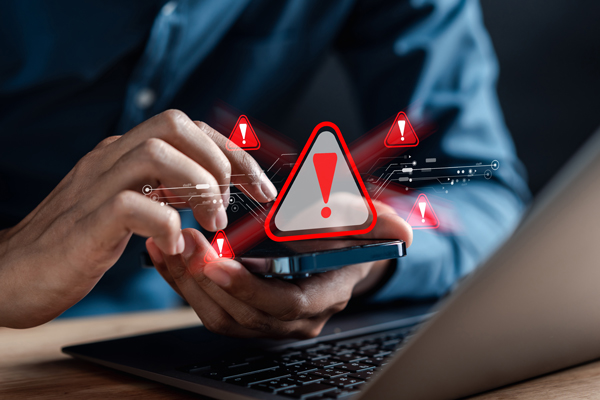
What To Watch For In 2024
The new year has just begun but patterns of cybersecurity risks are already forming. In 2024, the ever-evolving world of cybersecurity faces new challenges that demand heightened awareness and robust defense mechanisms. Let’s delve into the biggest cybersecurity risks anticipated in 2024.
AI-Powered Attacks:
As artificial intelligence (AI) becomes more integrated into cybersecurity defenses, cybercriminals are also leveraging AI for malicious purposes. AI-powered attacks can automate the identification of vulnerabilities, optimize phishing campaigns, and even mimic human behavior to bypass security protocols. Organizations must adapt by incorporating AI-driven cybersecurity solutions that can effectively combat these evolving threats.
The best practices for spotting phishing attacks still apply—look for unusual email addresses, links that seem off or go to a site that isn’t related to the entity that sent the email, unusual requests or requests for money, passwords or personal identification material—but computer learning is bound to make these attacks trickier to spot. Phishing education has never been more important.
IoT (Internet of Things) Insecurity
With the increasing prevalence of smart devices, all of which have the ability to talk to one another, the IoT landscape becomes a prime target for cyber-attacks. In 2024, we can anticipate a surge in attacks targeting insecure IoT devices, exploiting vulnerabilities to gain access to networks or launch large-scale distributed denial-of-service (DDoS) attacks. Securing IoT devices through regular updates, strong authentication mechanisms, and encryption will be crucial to thwart potential threats.
Quantum Computing Threats
While quantum computing holds great promise for various industries, it also poses a potential threat to current encryption methods. In 2024, as quantum computing capabilities advance, there’s a risk that traditional encryption algorithms could be easily deciphered. The need for quantum-resistant encryption becomes imperative, prompting organizations to stay ahead of the curve by adopting quantum-safe cryptographic practices.
Deepfake Menace:
Deepfake technology has the potential to deceive and manipulate individuals by creating highly realistic forged content, such as videos and audio recordings. In 2024, the use of deepfakes in social engineering attacks and misinformation campaigns is expected to rise. Enhanced awareness, robust authentication processes, and advanced AI-driven detection tools are essential for countering the threats posed by deepfakes.
Cyber Security Regulation
Governments and large organizations have been forced to take the issue of cybersecurity seriously. Data breaches by bad actors have the potential to be catastrophic both socially and politically so administrations are trying to get their arms around the problem. Europe is more active in this arena, with the UK prompting businesses to fall into compliance with a new, stringent security act by the end of April 2024 among other changes in Britain and the European Union over the last few years. In America, however, regulation is likely coming to be in line with other nations but also to better protect its citizens.
In the face of these evolving cybersecurity risks, organizations and individuals must prioritize proactive measures to safeguard their digital assets. This includes regular cybersecurity training for employees, implementing advanced threat detection technologies, and staying abreast of the latest cybersecurity developments. The collaborative efforts of governments, businesses, and individuals are essential to create a resilient digital landscape that can withstand the challenges of the ever-changing cybersecurity landscape.



